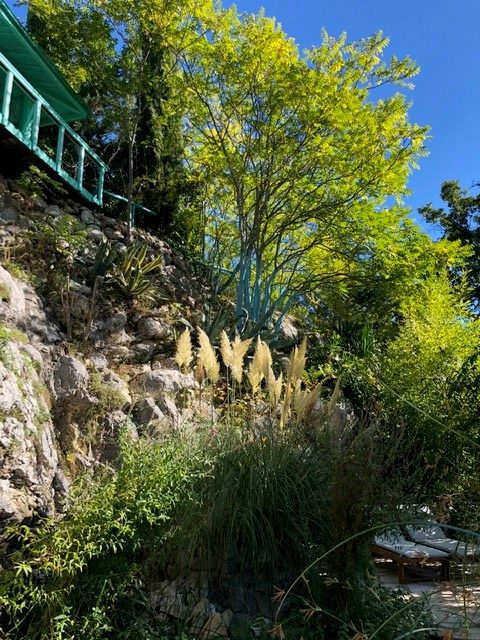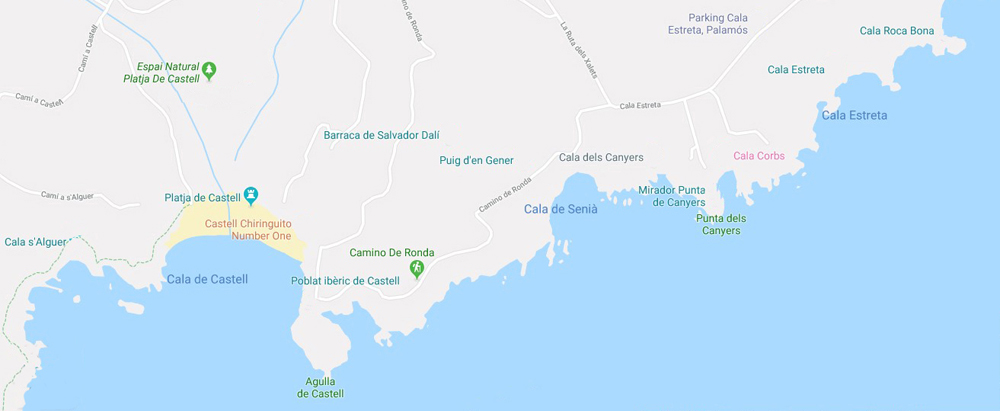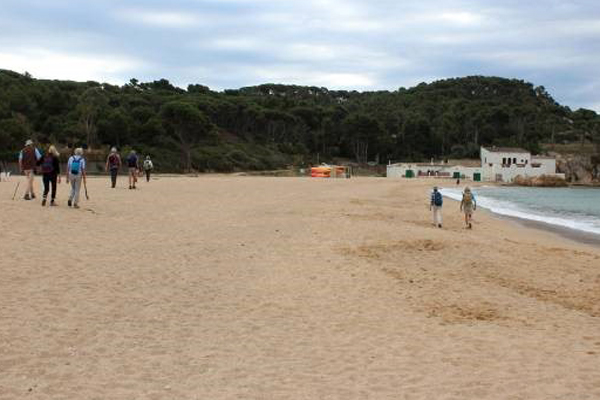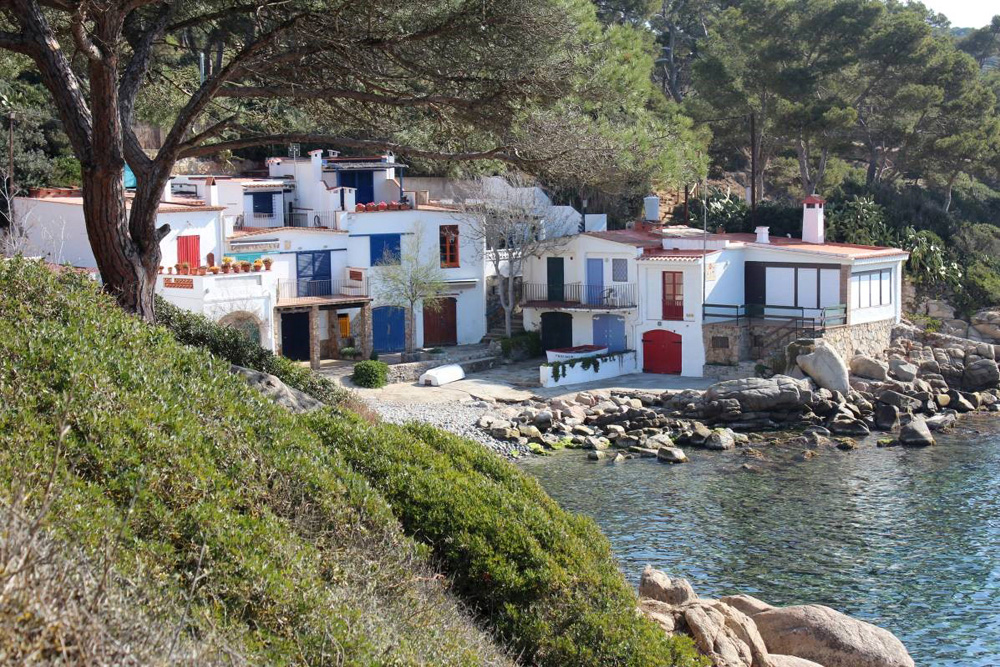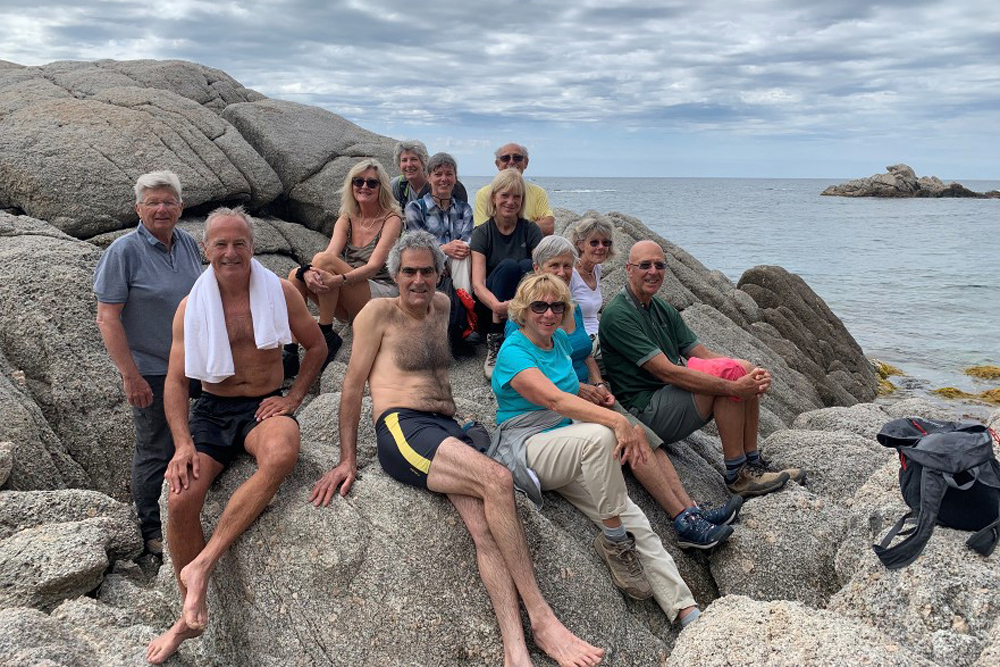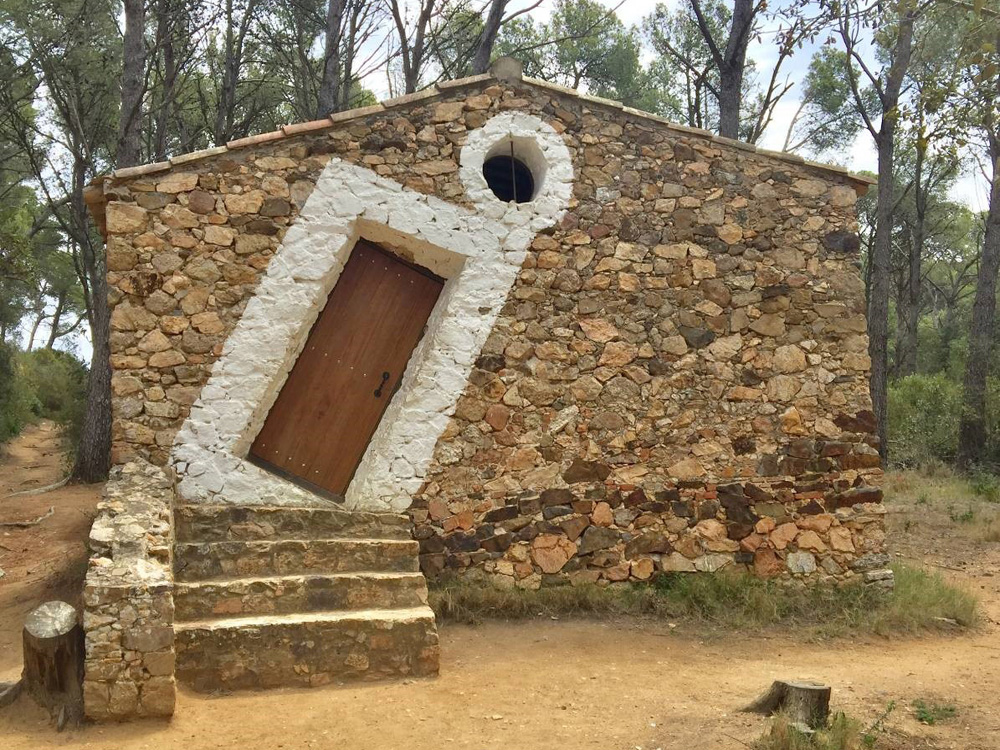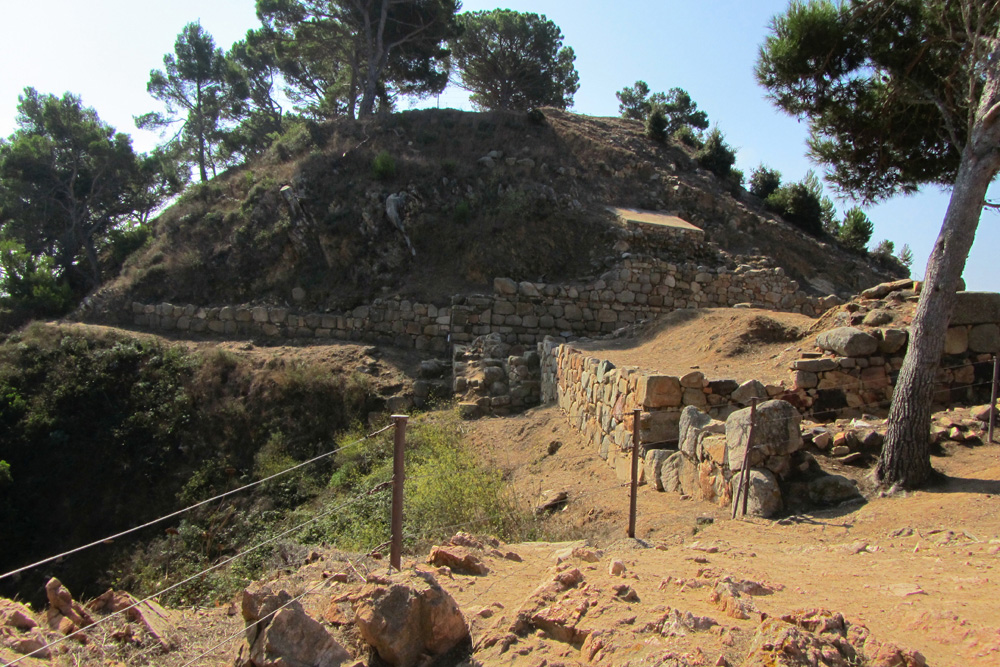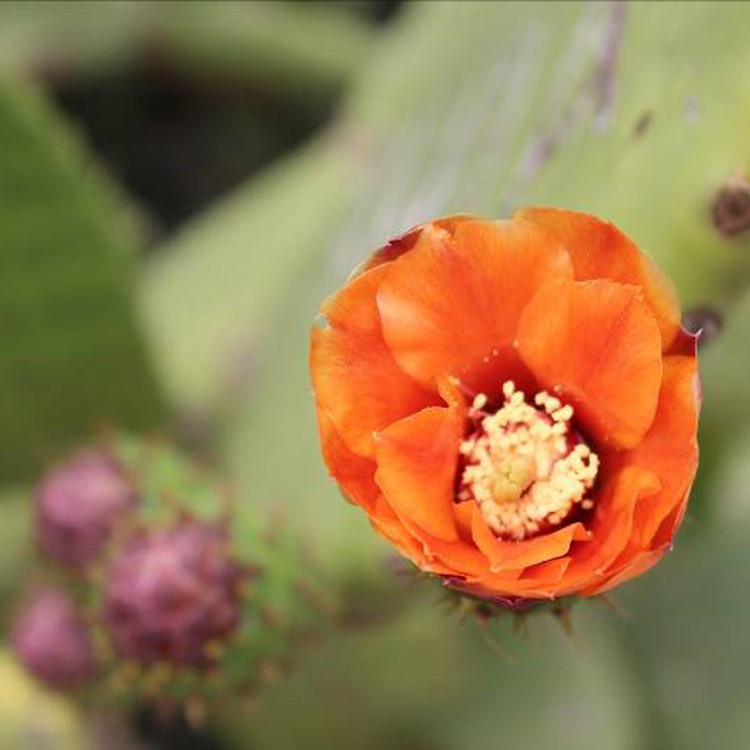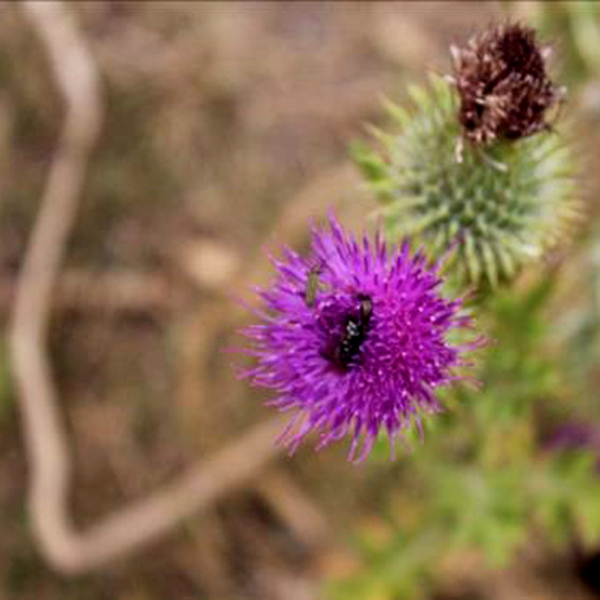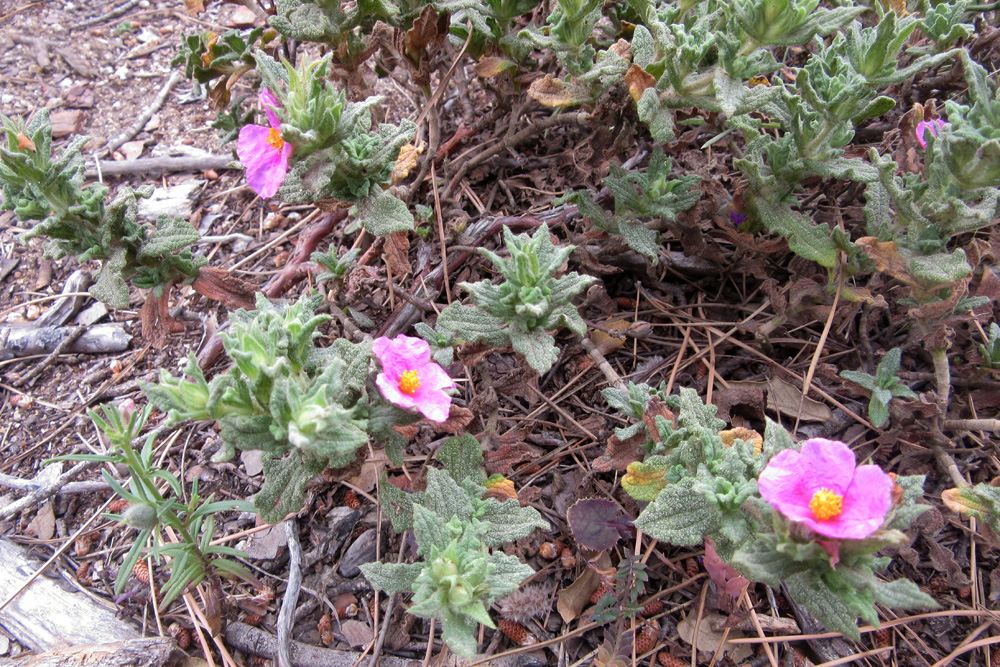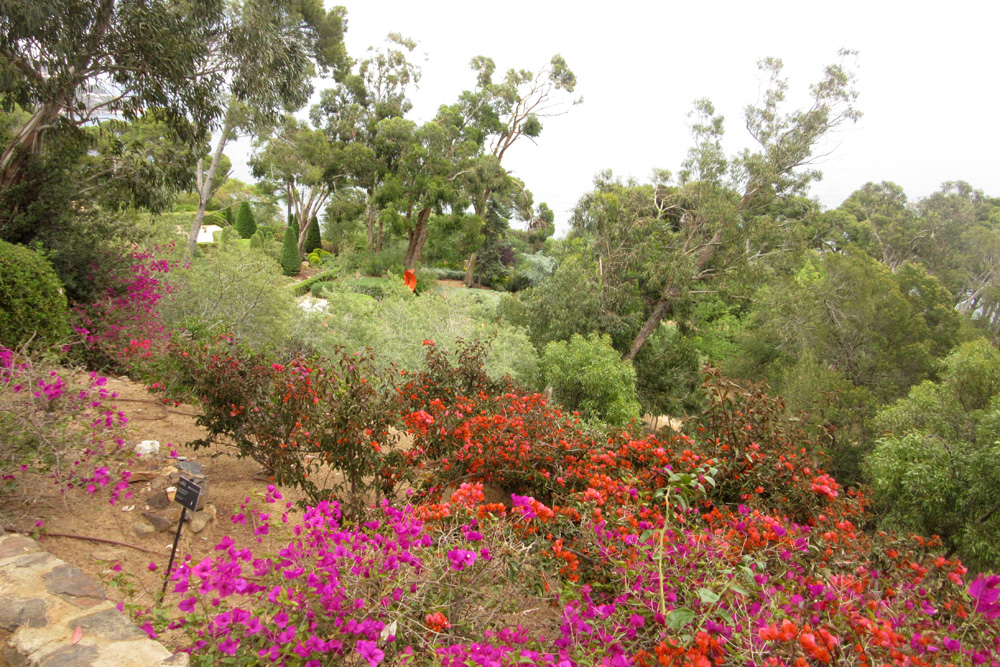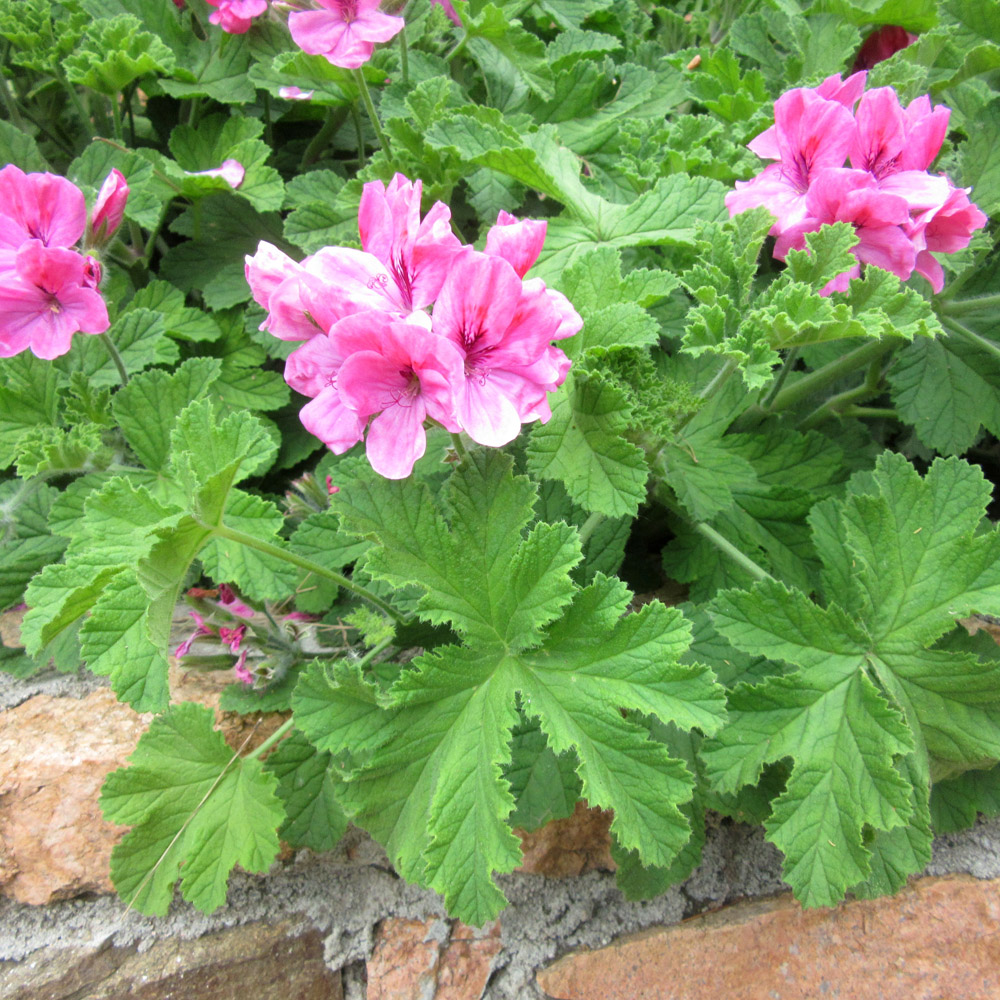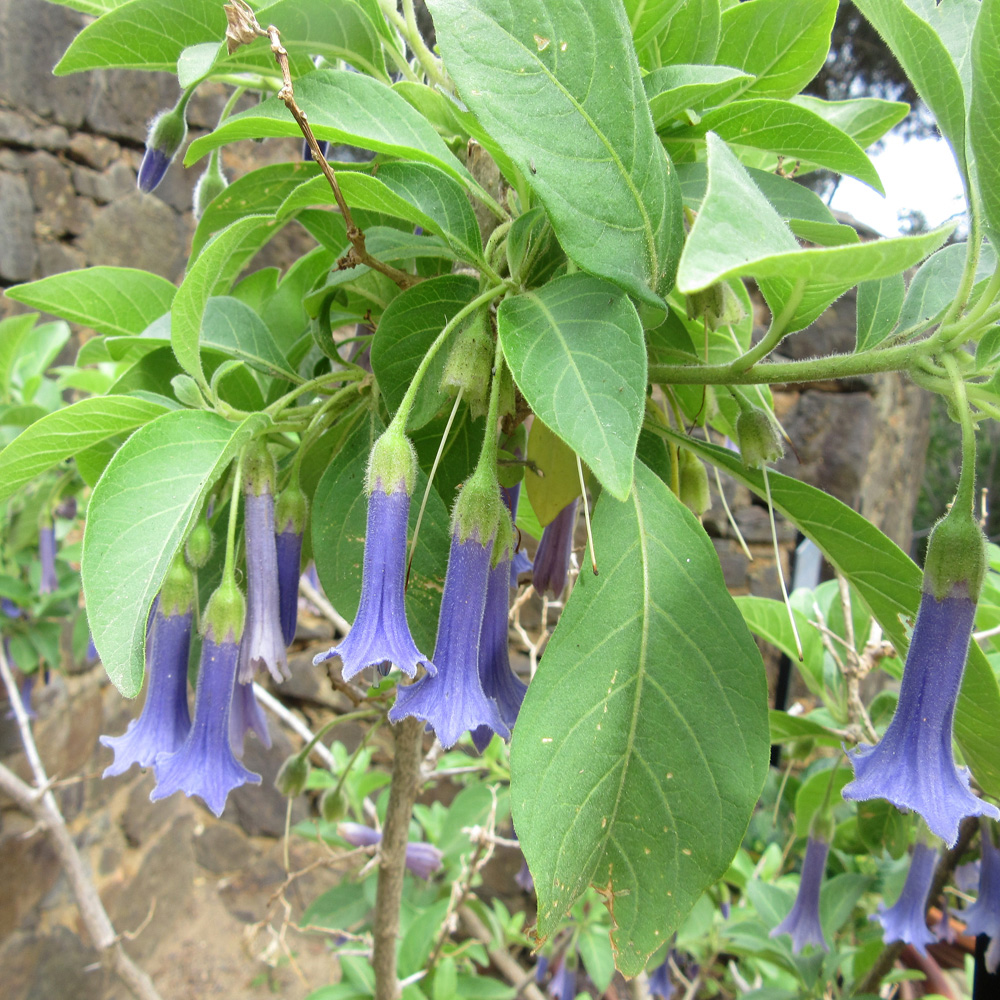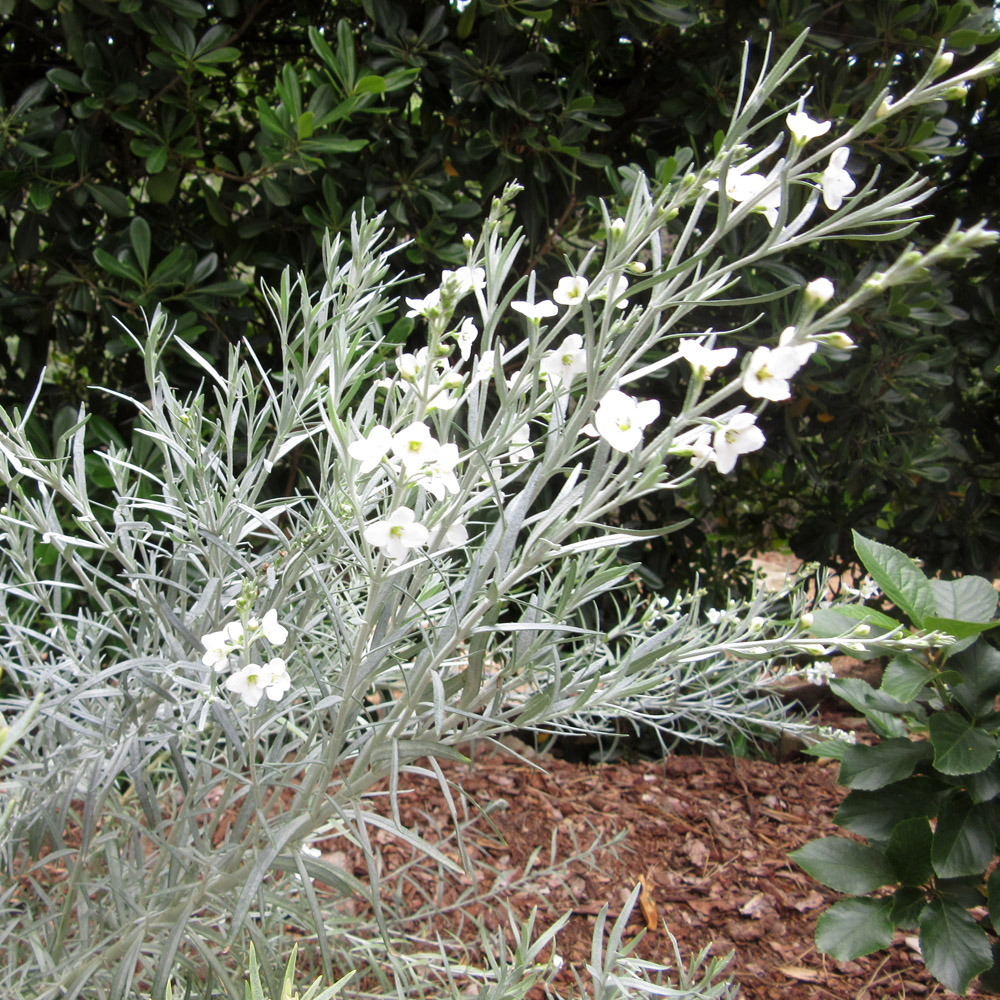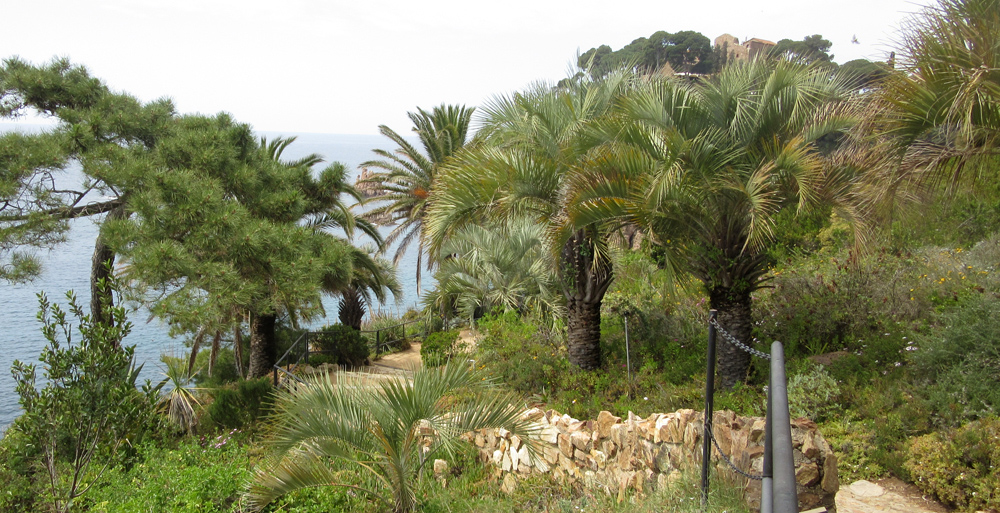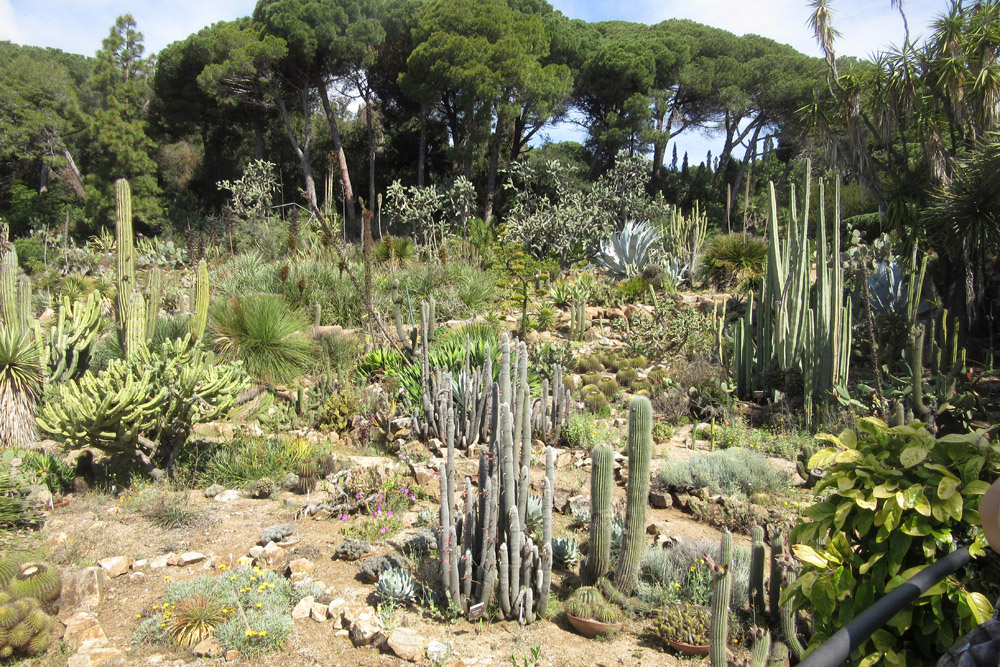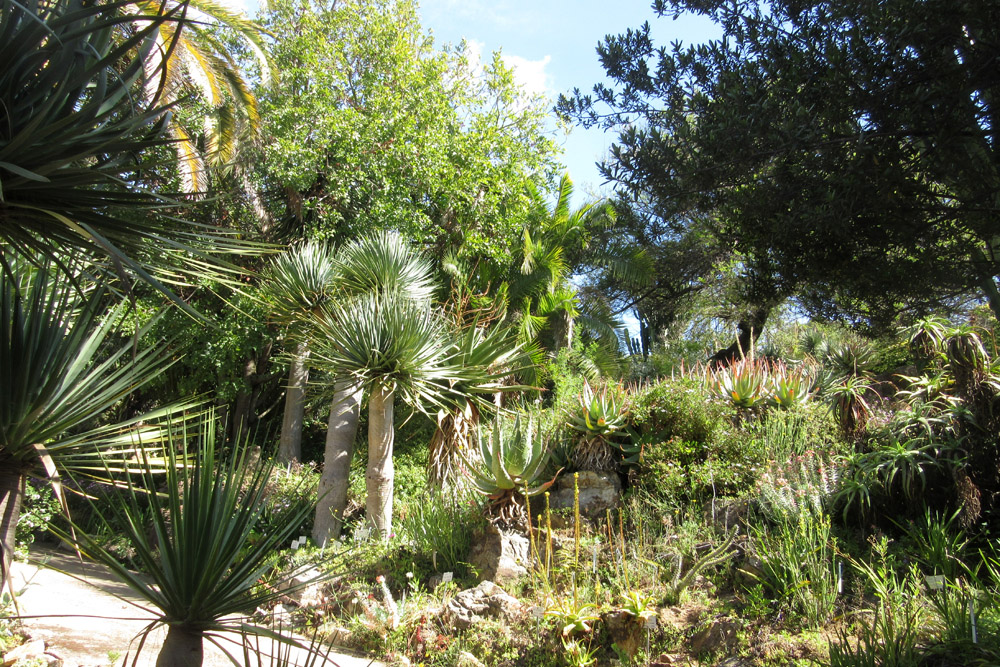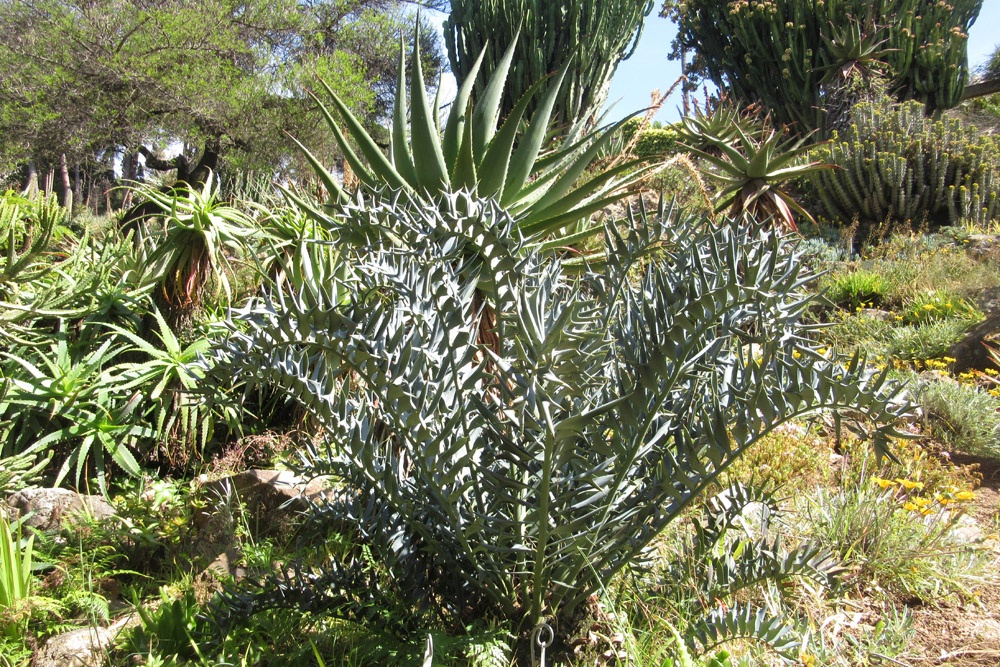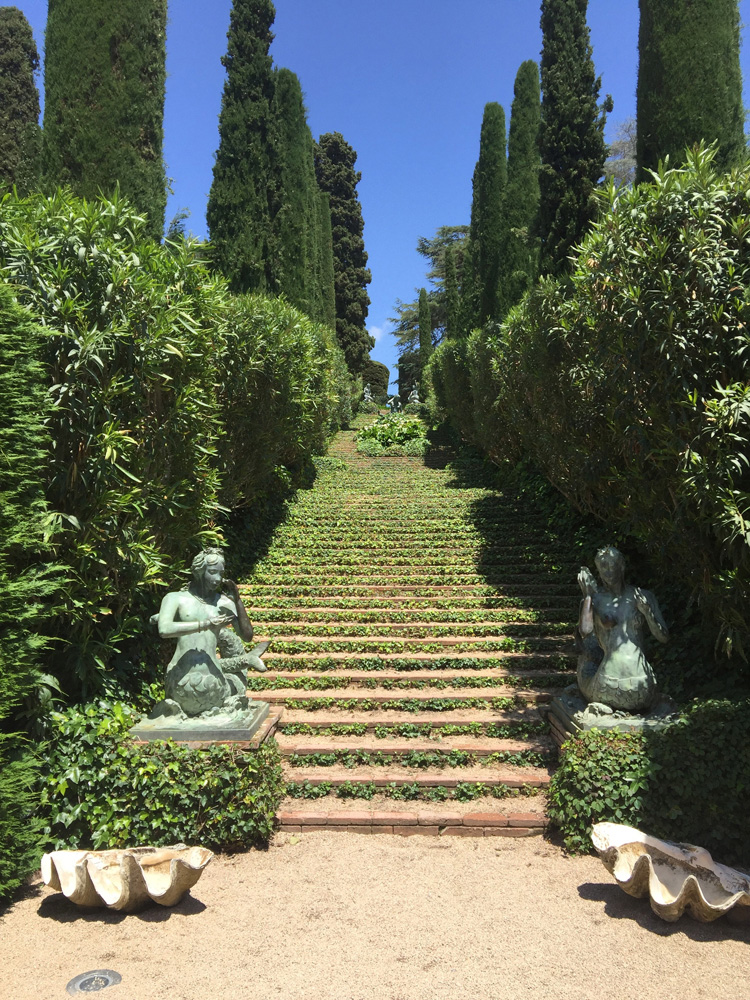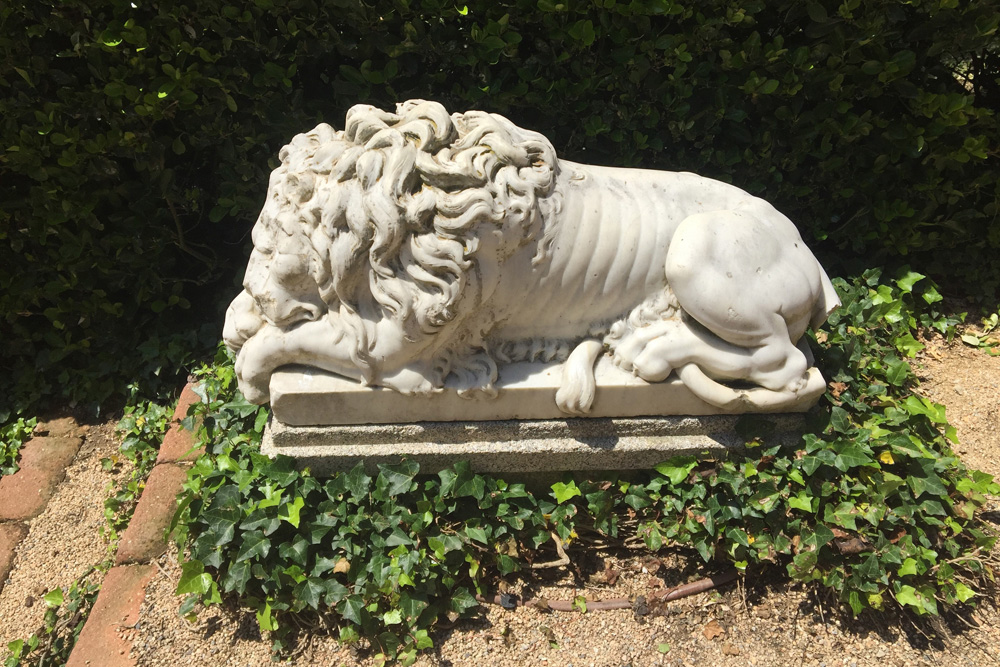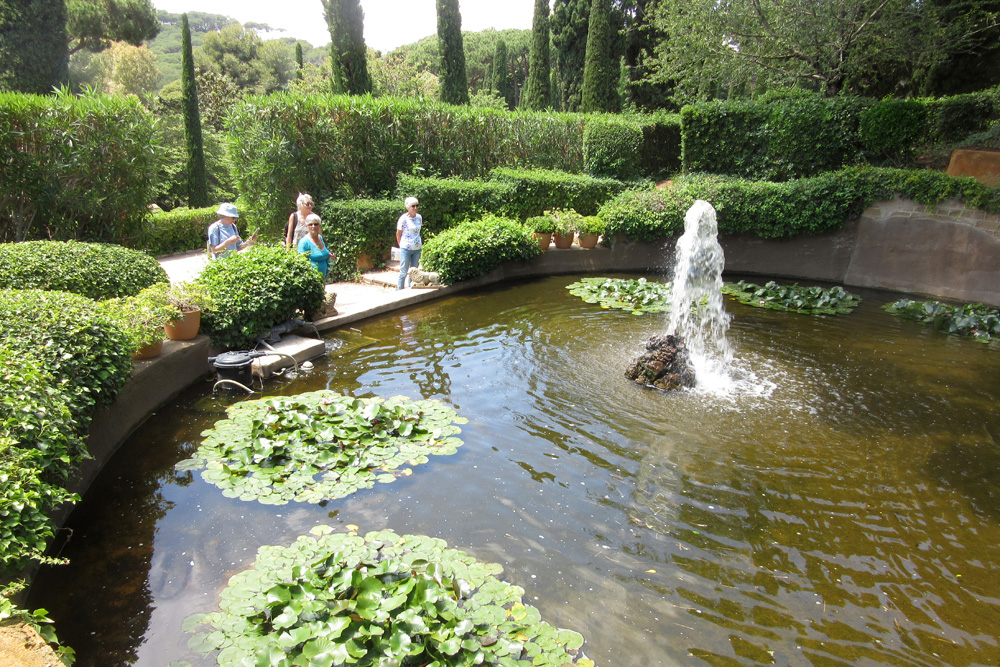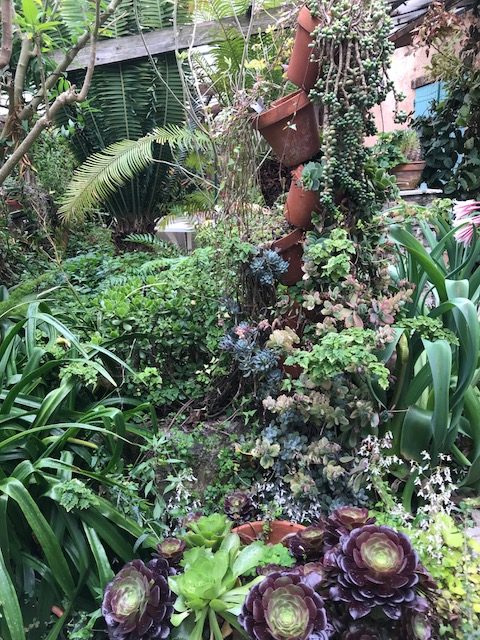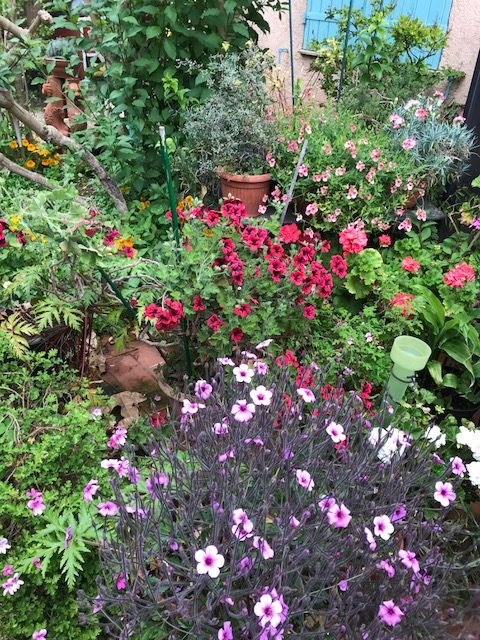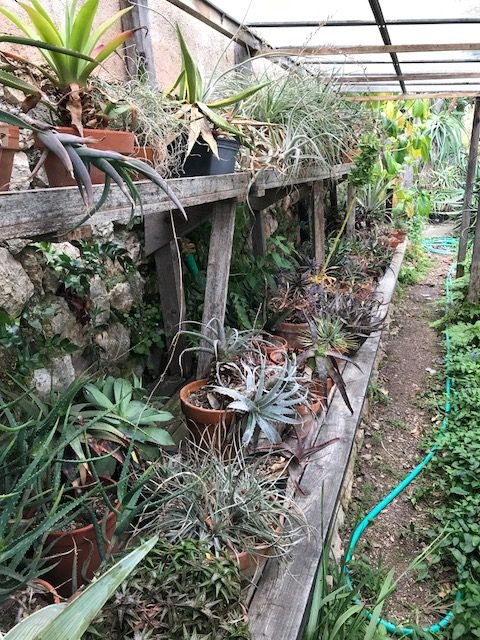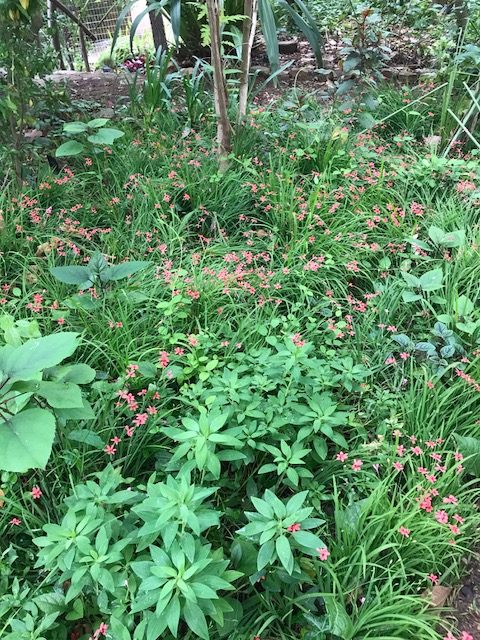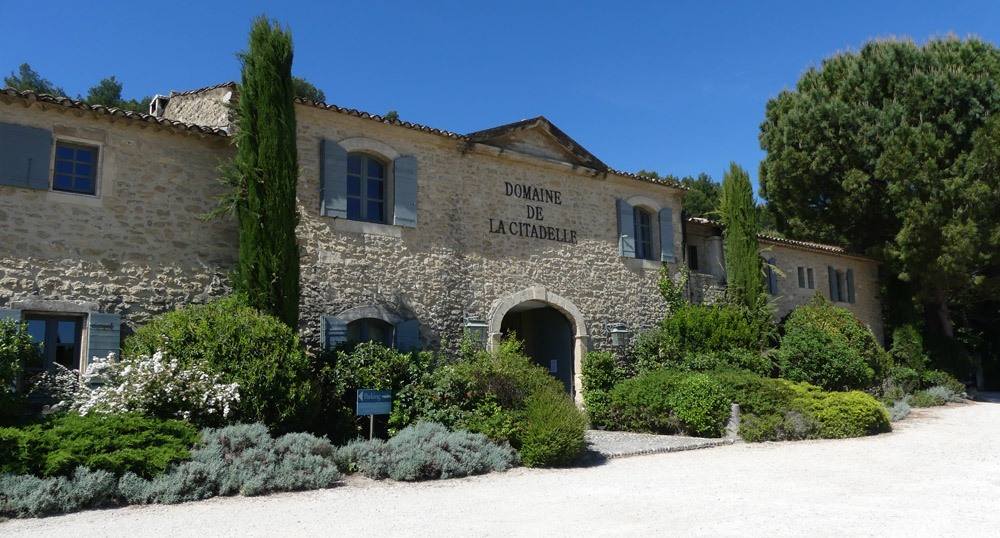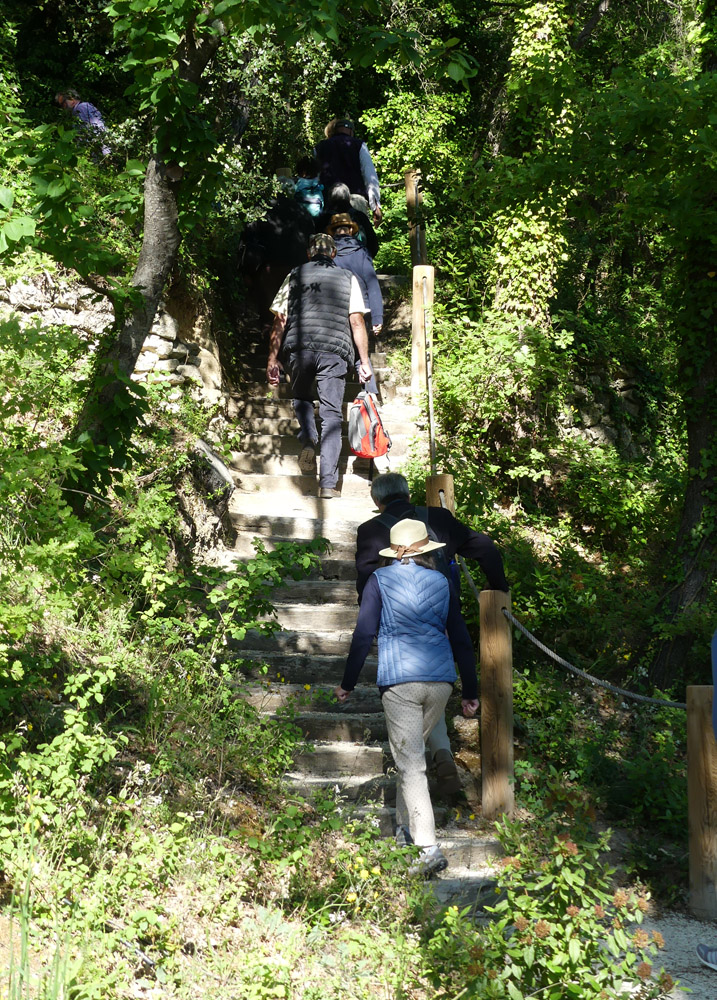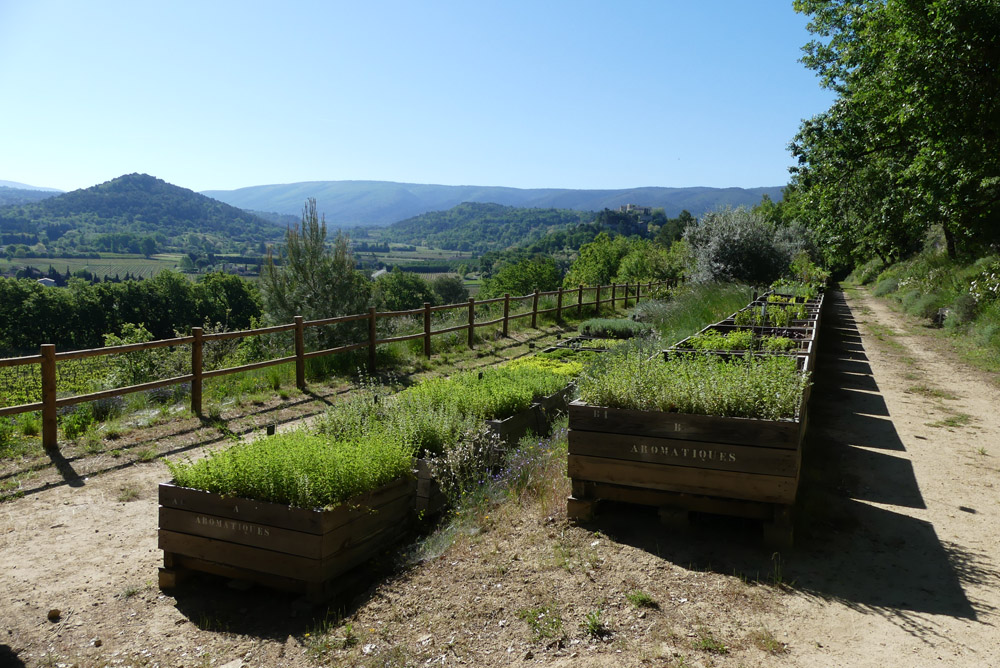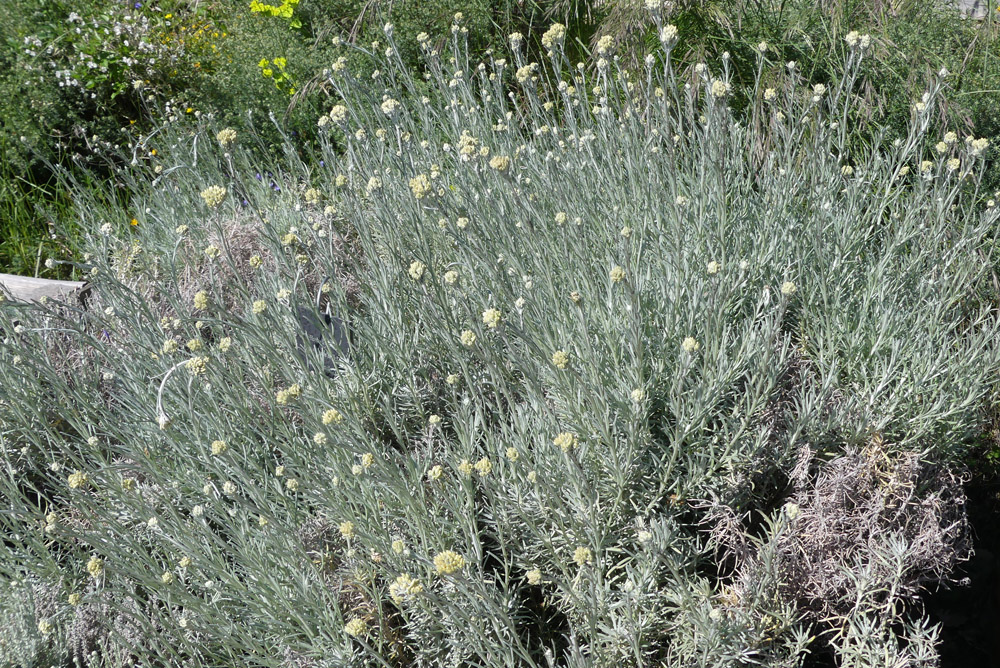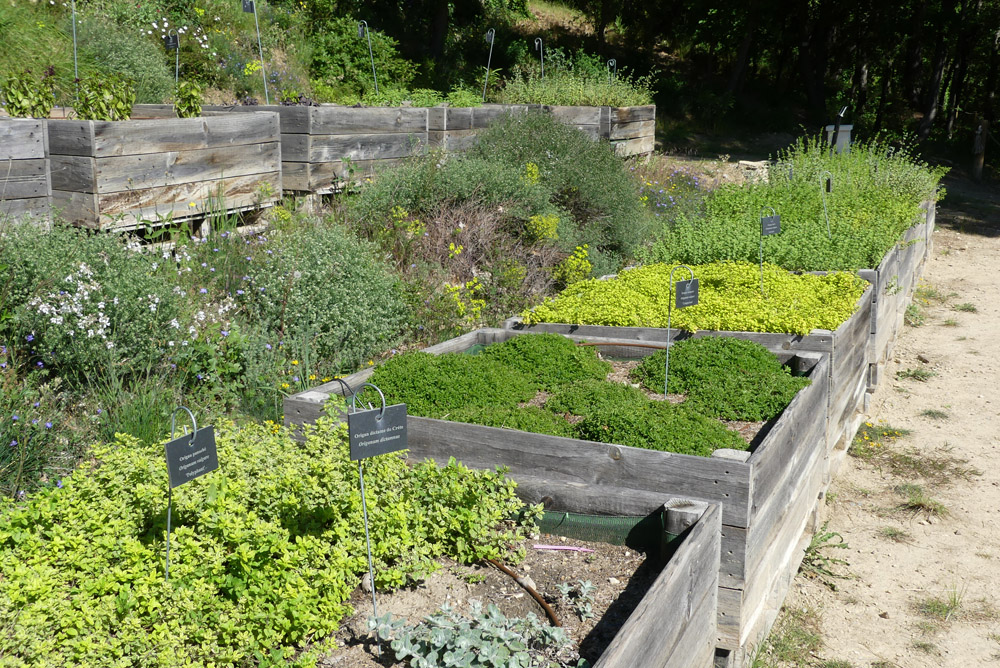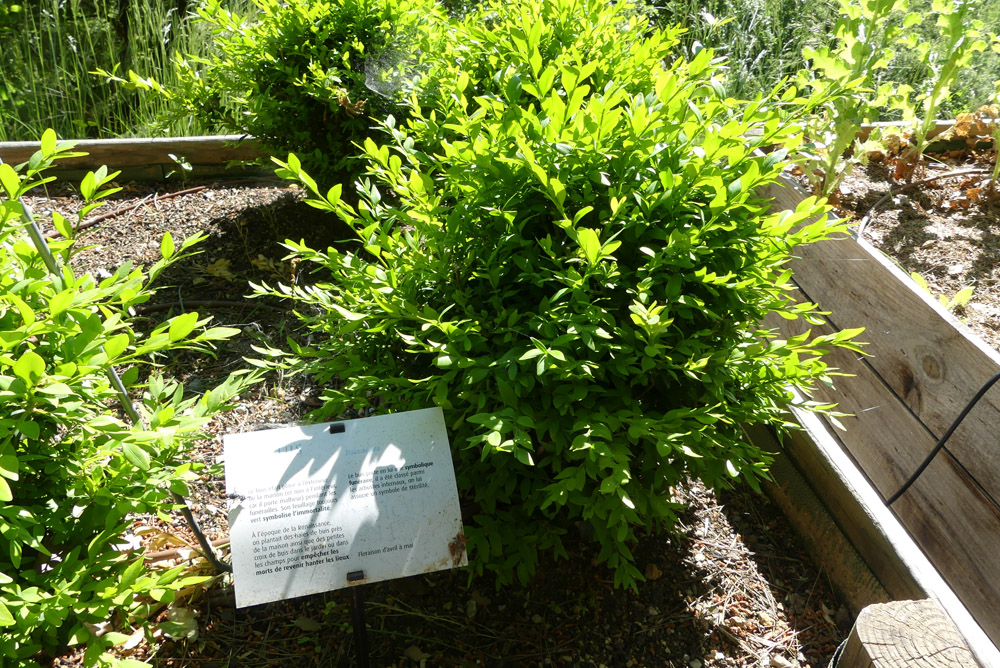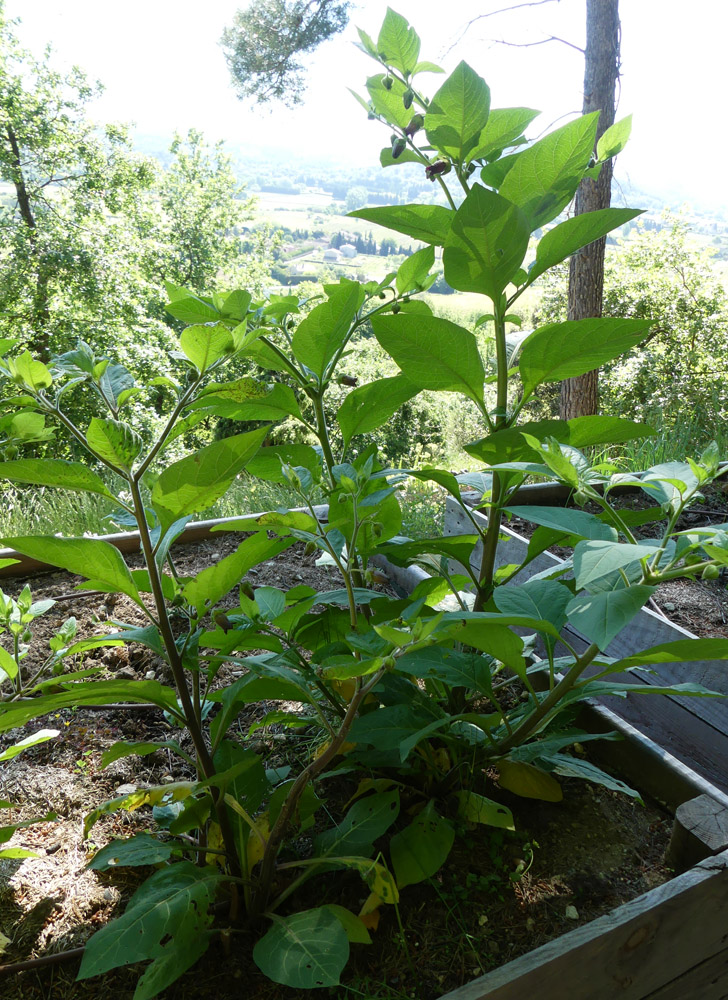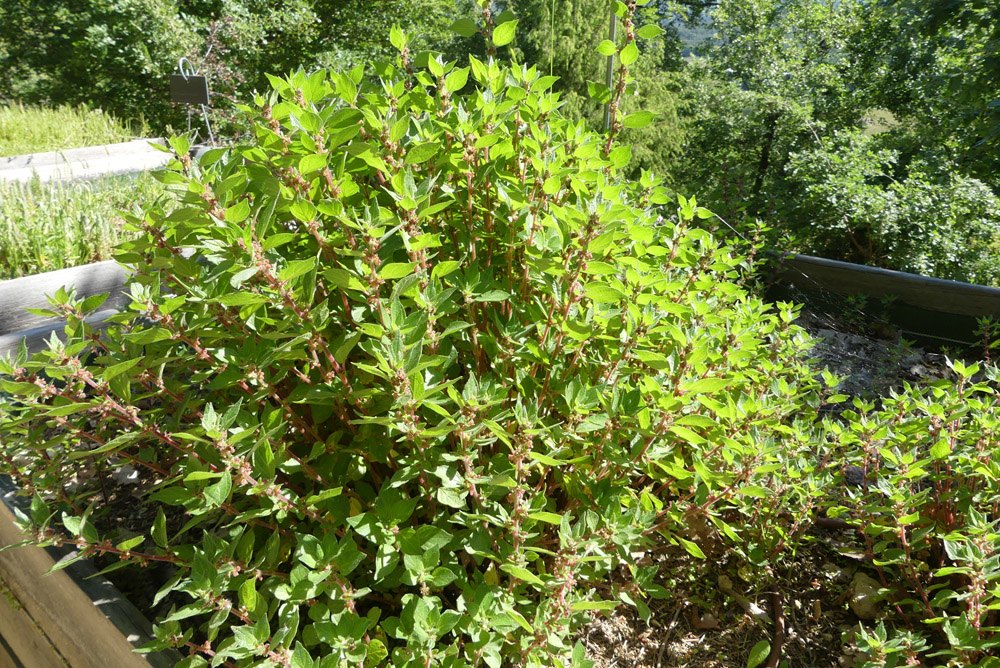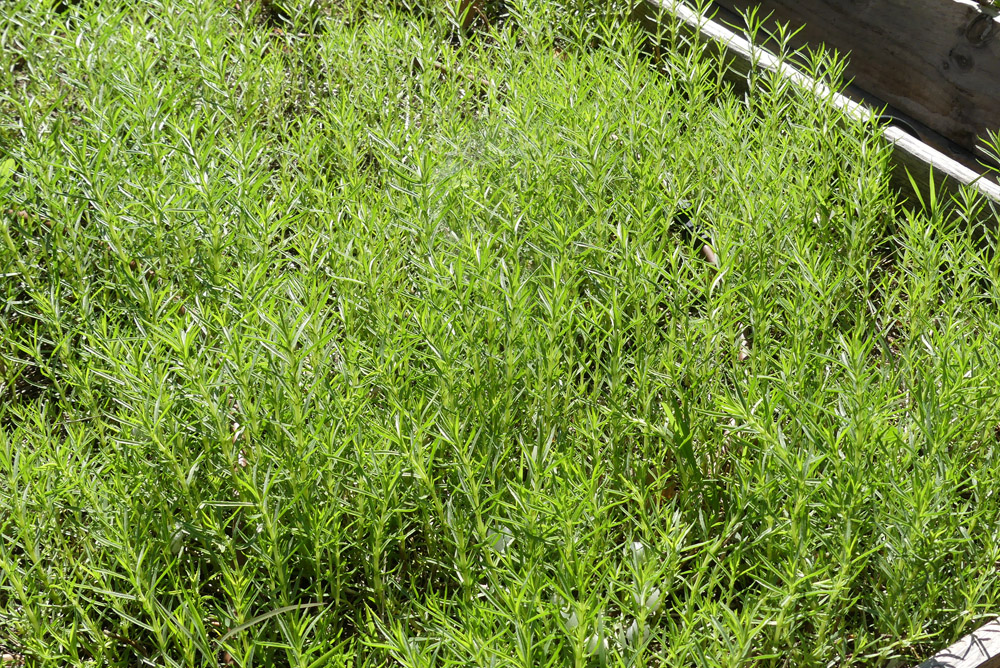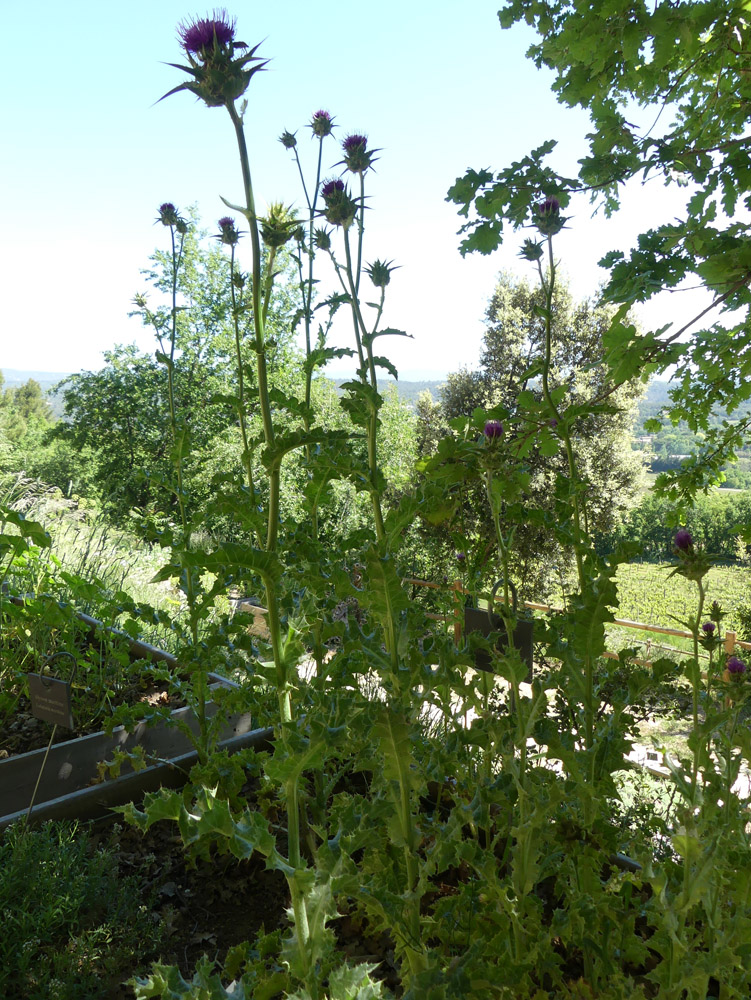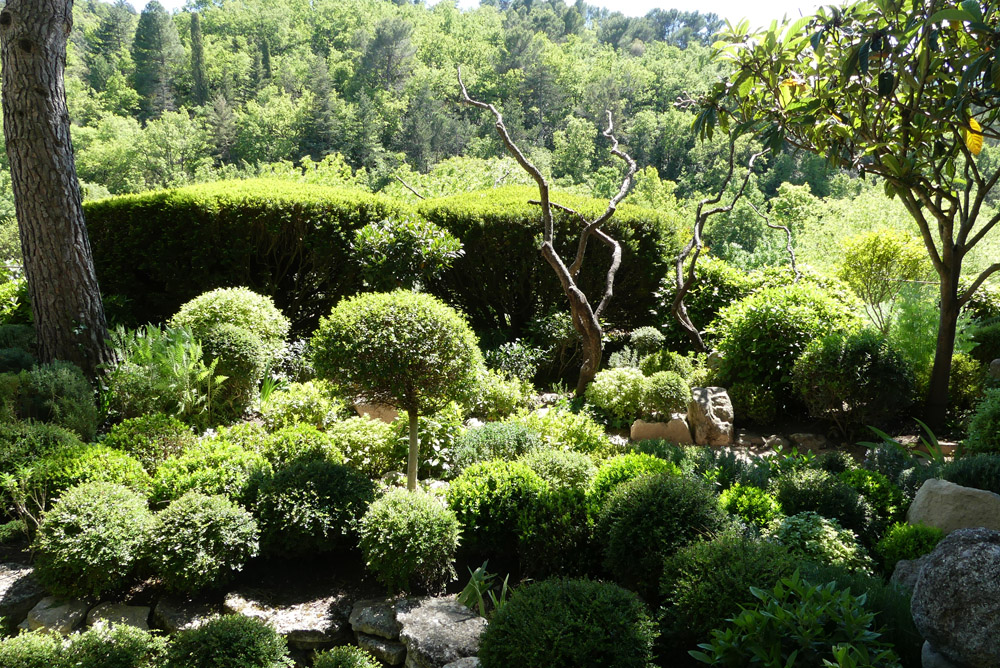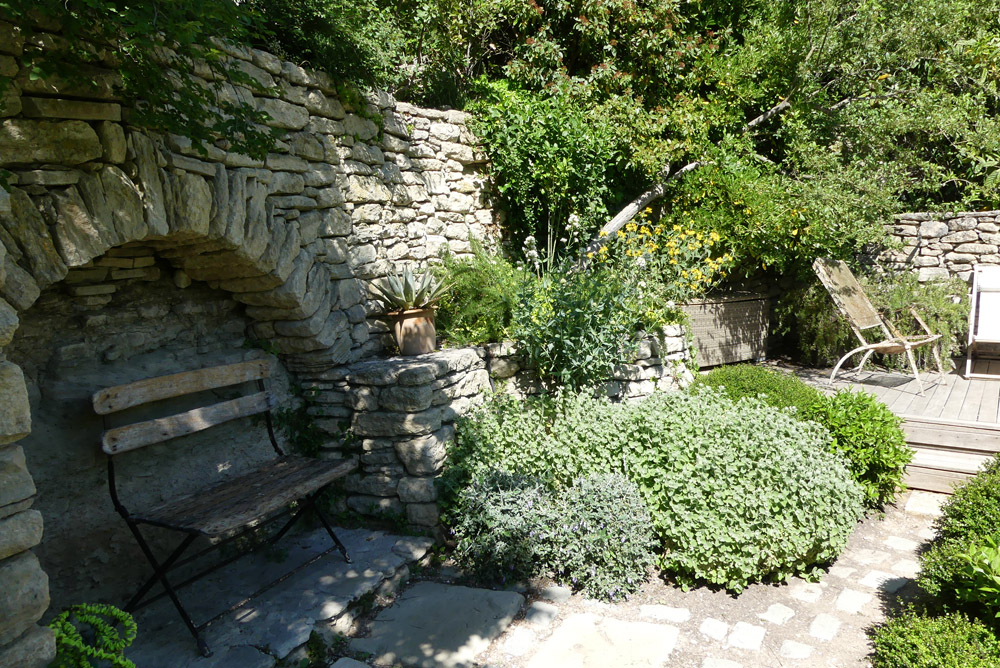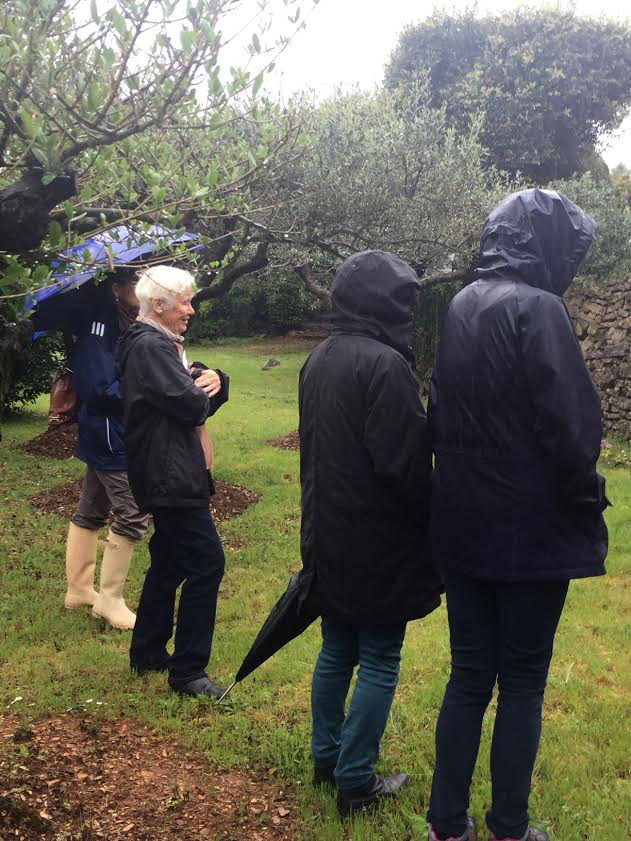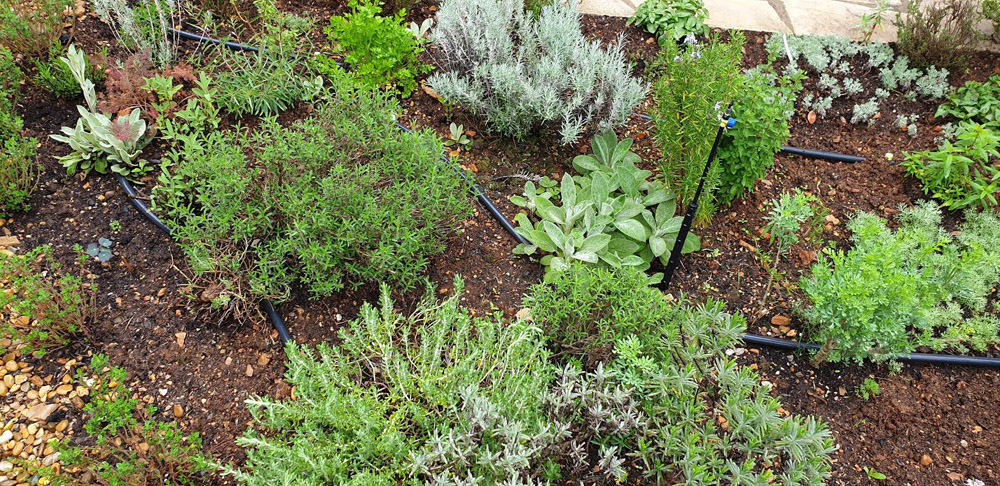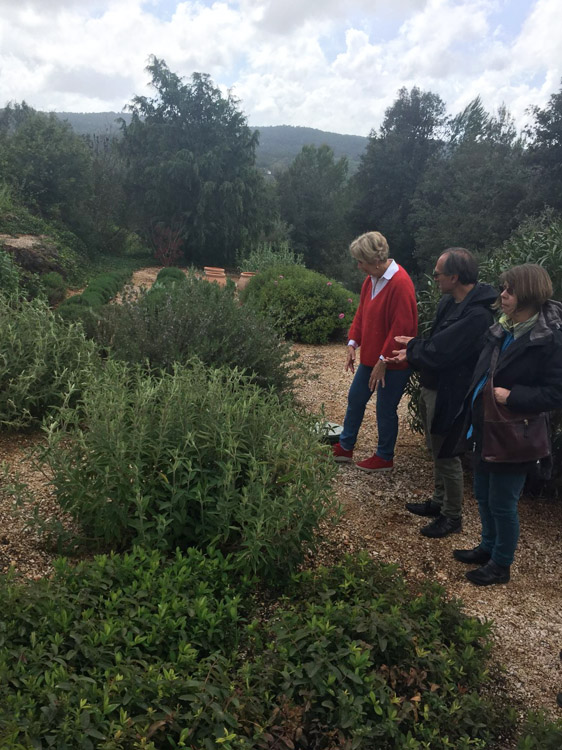October / octobre 2018
Visite du jardin Le Vallon du Brec, Coursegoules, Alpes-Maritimes
Click on an image to enlarge it / Cliquez sur une image pour l’agrandir
On a beautiful sunny Friday in October, we visited the garden at Le Vallon du Brec, a jardin remarquable situated in the hinterland of Nice at a height of 1000 metres. The garden was created in 1992 by a painter and photographer who used Japanese influences to enhance the steeply wooded site overlooking a small valley. When they moved, the garden suffered a period of neglect, however now new owners have breathed life back into the space and enhanced it with their own ideas. The garden contains plants from China, Japan and North America as well as indigenous ones. There are red-painted wooden structures, redolent of Japan, comprising staircases, platforms and arches, and a more Persian-looking turquoise pavilion overlooking a tranquil fish pond and swimming pool. The turquoise colour of the pavilion is echoed in the oil-painted tree trunks, which also greet one at the entrance to the garden.
Par un beau vendredi d’octobre ensoleillé, nous avons visité le jardin du Vallon du Brec, jardin remarquable situé dans l’arrière-pays niçois à une altitude de 1000 mètres. Le jardin fut créé en 1992 par un peintre et photographe qui utilisa l’influence japonaise pour mettre en valeur le site fortement boisé donnant sur une petite vallée. Quand les propriétaires quittèrent les lieux, le jardin subit une période de négligence, cependant les nouveaux propriétaires ont su insuffler une nouvelle vie dans cet endroit grâce à leurs propres idées. Le jardin comporte des plantes originaires de Chine, du Japon et d’Amérique du Nord ainsi que des plantes locales. Il y a des structures en bois peintes en rouge, suggérant le Japon, à savoir des marches d’escalier, plateformes et arches et aussi un pavillon turquoise à l’allure persane surplombant un bassin rempli de poissons et une piscine. La nuance turquoise du pavillon est répétée à travers la peinture à l’huile recouvrant les troncs des arbres qui accueillent les visiteurs à l’entrée du jardin.
Due to the warm October we have had this year the garden was only just beginning to show its autumnal colours.
A cause du mois d’octobre assez doux cette année, le jardin commençait tout juste à montrer ses couleurs automnales.
The owners also showed us around their beautiful and originally decorated house with its two spacious gites and an artist’s studio.
After the garden tour, we walked up the hill to Sophie’s restaurant where we had an excellent lunch.
Les propriétaires nous ont également fait visiter leur maison décorée avec gout et originalité et les deux grands gites ainsi que le studio d’artiste.
Après la visite du jardin, nous sommes montés jusqu’au restaurant de Sophie en haut de la colline où on nous a servi un excellent déjeuner.
Our thanks to Martin Smith who organised this delightful day. See more photos of the garden on the Vallon du Brec website.
Merci à Martin Smith qui a organisé cette charmante journée. Voir d’autres photos du jardin sur le site Internet du Vallon du Brec.
Text and photos : June Grindley
Traduction en français : Chantal Guiraud
![]()

